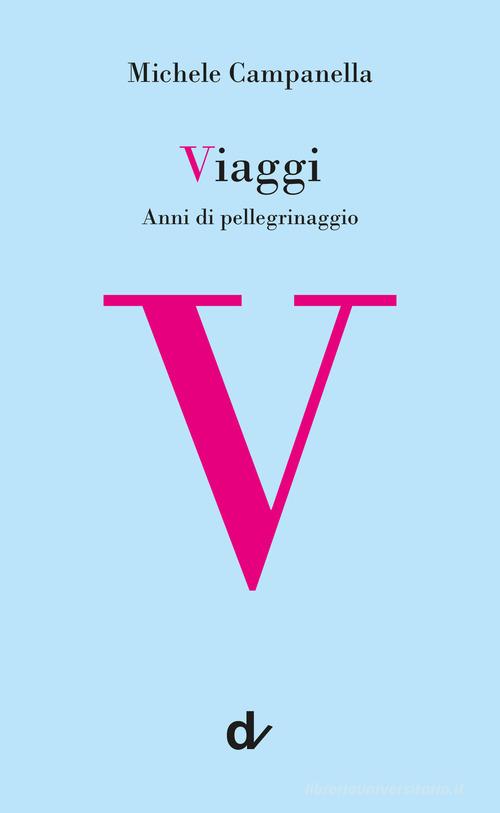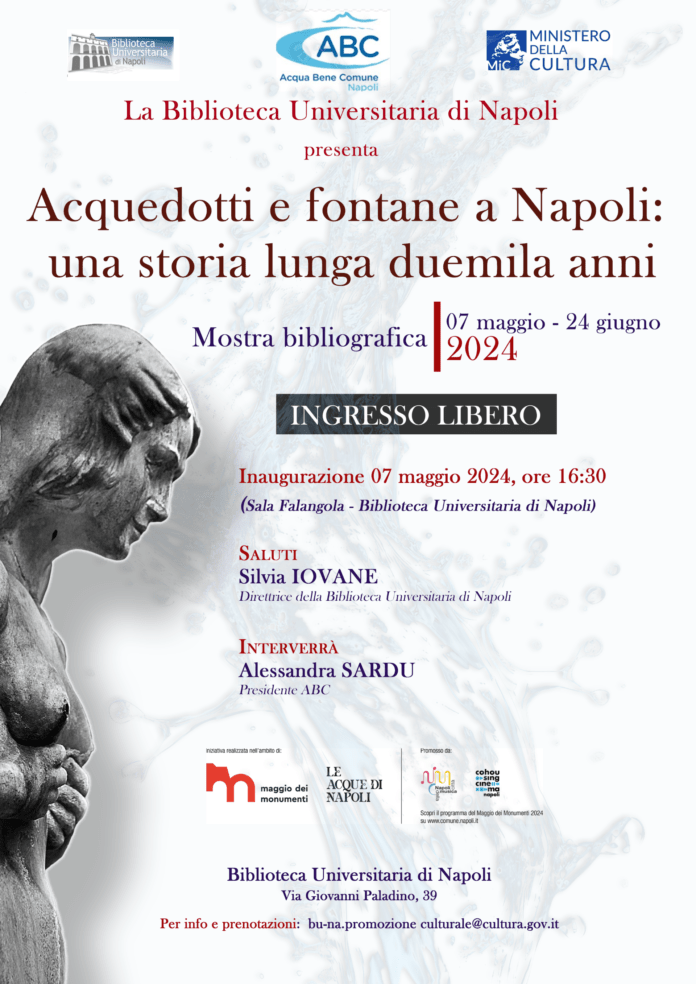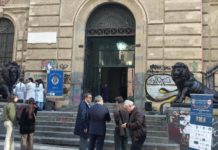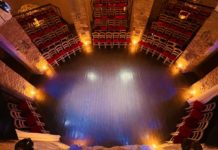Mese intenso di incontri alla Biblioteca universitaria di Napoli. Appena inaugurata e fino al 24 giugno, la mostra bibliografica Acquedotti e fontane a Napoli: una storia lunga duemila anni. L’iniziativa fa parte del programma del Maggio dei monumenti 2024 ,”Le acque di Napoli”, promosso dal Comune di Napoli.
Attraverso i libri conservati in Biblioteca, il pubblico potrà ripercorrere la storia degli acquedotti napoletani e di alcune delle principali fontane che hanno segnato la vita del capoluogo partenopeo, partendo dalle acque del fiume Sebeto, sospese tra mito e storia, passando attraverso l’acquedotto del Serino, in epoca romana e poi moderna, senza dimenticare lo storico acquedotto della Bolla e il canale Carmignano.
In esposizione libri e documenti databili tra il XVI ed il XIX secolo fino al 1885 quando, alla presenza del re d’Italia, venne inaugurata la fontana monumentale di Piazza del Plebiscito con cui si celebrava il nuovo acquedotto che, riprendendo la tradizione romana, riportava in città le acque che sgorgano dalle sorgenti dell’altopiano di Serino (Avellino).
Tra le opere in mostra, l’Eneide di Virgilio, tradotta da Annibal Caro, nella prestigiosa editio princeps del 1581, il De Architectura di Vitruvio con le xilografie tratte dai disegni di Fra Giocondo, stampato nel 1511. Tra i documenti più recenti, le relazioni e le mappe elaborate dalle commissioni ottocentesche che presiedettero alla costruzione del nuovo acquedotto, oltre a immagini e rappresentazioni realizzate da incisori ed artisti che, nel corso dei secoli, vollero immortalare le fontane di Napoli, molte delle quali ormai definitivamente scomparse.
La storia è storia della città e della sua cittadinanza, tra passato e presente, antiche istituzioni e gestione moderna delle risorse idriche per il raggiungimento di unico obiettivo: la salvaguardia dell’acqua, bene comune.

Martedì 21 maggio, alle 17, la Biblioteca ospiterà anche la presentazione del libro di Michele Campanella: Viaggi. Anni di pellegrinaggio. Il libro è un’antologia di annotazioni fatte nel corso degli anni, spesso in loco, nei tempi vuoti, per ridurre l’inevitabile tensione che accompagna il girovagare del musicista. E poi ancora ricordi di esperienze lontane fatte durante i tanti viaggi di un autore il cui interesse è sempre stato rivolto all’umanità, agli incontri, al dialogo.
Napoletano, Campanella dirige orchestre, parla volentieri al pubblico dei suoi concerti, scrive. Considera il dialogare con gli spettatori e con i lettori un importante aiuto alla vitalità della musica “classica”. E così ha dato vita al Festival Spinacorona, passeggiate musicali napoletane.
Infine, il 28 maggio alle 15:30 Filomena Maria Sardella proporrà il volume Storia del bello e dell’utile nell’arredo urbano, Guida editore, 2024. Bellissime sculture che si specchiano nell’acqua, le fontane si trasformano e si muovono nel contesto urbano: quelle qui descritte si raccontano da sole, dal Medioevo ai primi del XX secolo. Il volume propone anche fotografie di Giovanni Genova.
Per saperne di più
bu-na.promozioneculturale@cultura.gov.it
(per prenotare visita guidata alla mostra)
https://bibliotecauniversitarianapoli.cultura.gov.it/it/1/home
tel. 0815517025
May of appointments: Michele Campanella presents his travels among aqueducts and fountains, a history of two thousand years
Busy month at the University Library of Naples. The bibliographic exhibition “Aqueducts and fountains in Naples: a two-thousand-year history” has just opened and will run until June 24th. The initiative is part of the program of the May of Monuments 2024, “The waters of Naples”, promoted by the Municipality of Naples.
Through the books preserved in the library, the public will be able to retrace the history of the Neapolitan aqueducts and some of the most important fountains that have marked the life of the Neapolitan capital, starting from the waters of the Sebeto river, suspended between myth and history, through the Serino aqueduct, in Roman and then modern times, without forgetting the historic Bolla aqueduct and the Carmignano canal.
On display are books and documents from the 16th to the 19th centuries, up to 1885, when, in the presence of the King of Italy, the monumental fountain in Piazza del Plebiscito was inaugurated to celebrate the new aqueduct that, following the Roman tradition, brought the water from the springs of the Serino (Avellino) plateau back to the city.
Among the works on display are Virgil’s Aeneid, translated by Annibal Caro in the prestigious editio princeps of 1581, Vitruvius’ De Architectura with woodcuts after drawings by Fra Giocondo, printed in 1511. More recent documents include reports and maps prepared by the nineteenth-century commissions that oversaw the construction of the new aqueduct, as well as images and representations by engravers and artists who, over the centuries, sought to immortalize the fountains of Naples, many of which have now disappeared forever.
The story is the story of the city and its citizens, between past and present, between ancient institutions and modern management of water resources for the achievement of a single goal: the preservation of water, a common good.
On Tuesday, May 21rst, at 5 p.m., the library will host the presentation of Michele Campanella’s book: Journeys. Years of Pilgrimage. The book is an anthology of notes taken over the years, often on location, in empty times, to reduce the inevitable tension that accompanies a musician’s wanderings. It is also a remembrance of distant experiences made during the many journeys of an author who has always been interested in humanity, encounters and dialogue.
Campanella, a Neapolitan, conducts orchestras, loves to talk to the audience at his concerts, writes. He considers the dialog with the audience and the readers an important contribution to the vitality of “classical” music. And so he created the Spinacorona Festival, Neapolitan musical walks.
On Tuesday, May 21rst, at 5 p.m, the library will host the presentation of Michele Campanella’s book: Journeys. Years of Pilgrimage. The book is an anthology of notes taken over the years, often on location, in empty times, to reduce the inevitable tension that accompanies a musician’s wanderings. It is also a remembrance of distant experiences made during the many journeys of an author who has always been interested in humanity, encounters and dialogue.
Campanella, a Neapolitan, conducts orchestras, loves to talk to the audience at his concerts, writes. He considers the dialog with the audience and the readers an important contribution to the vitality of “classical” music. And so he created the Spinacorona Festival, Neapolitan musical walks.
Finally, on May 28th at 15:30, Filomena Maria Sardella will present the book History of the Beautiful and Useful in Urban Decor, Guida editore, 2024. Beautiful sculptures reflected in water, fountains that transform and move in the urban context: the ones described here tell their own story, from the Middle Ages to the early 20th century. The book also includes photographs by Giovanni Genova.
Read more at
bu-na.promozioneculturale@cultura.gov.it
(to book a guided tour of the exhibition)
https://bibliotecauniversitarianapoli.cultura.gov.it/it/1/home
0815517025










